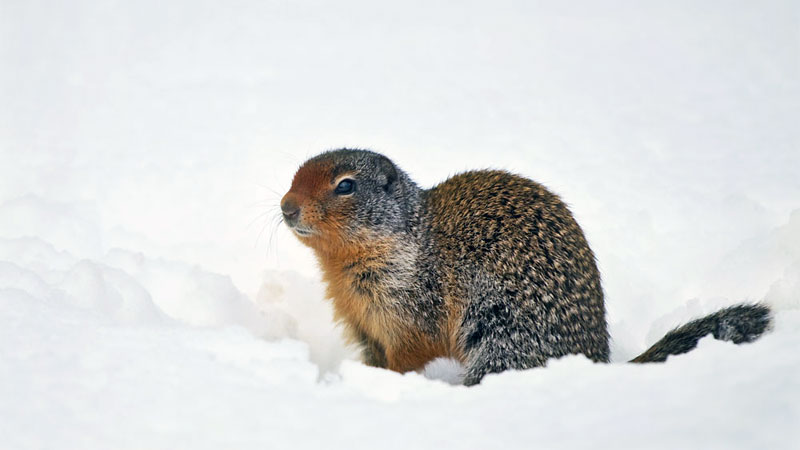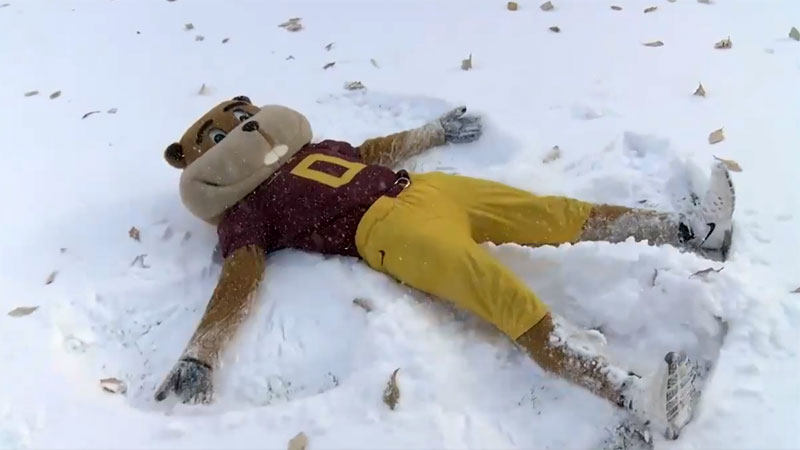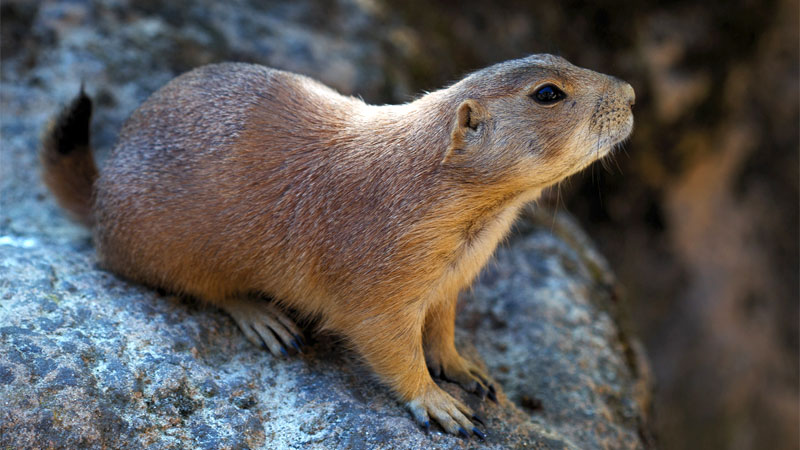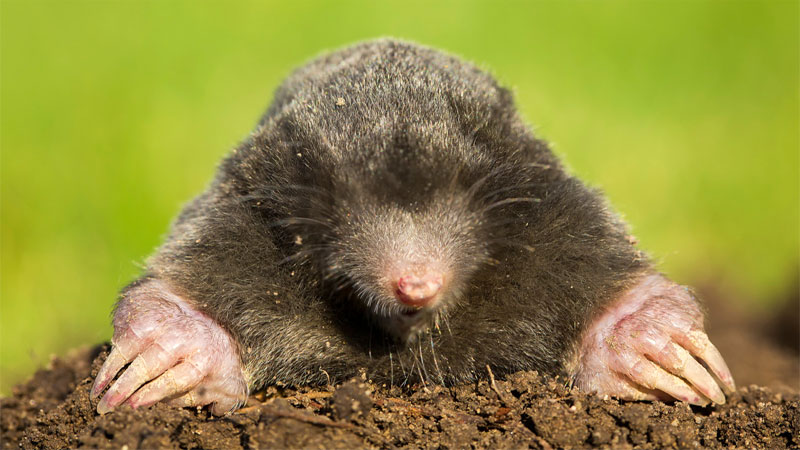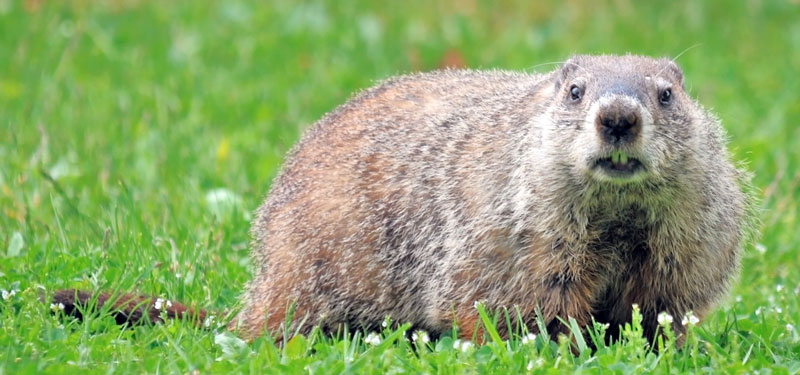This is a question we get fairly often as the temperatures start dipping and homeowners are finding what appear to be fresh gopher mounds. Don’t gophers hibernate in winter to give you a break?
Unfortunately, the answer isn’t straightforward. Gophers do not hibernate in the true sense, but they do have some periods of inactivity. Read on to learn their winter habits so you can effectively evict them.
Do Gophers Hibernate?
No, gophers don’t hibernate. But there’s much more to it than that. These underground dwellers continue their activities throughout the winter months, albeit at a slower pace. Though they’re harder to detect, it doesn’t mean they’re inactive.
Gophers, moles, and ground squirrels remain active during winter, digging and maintaining their elaborate tunnel systems. They focus on surviving the colder season by storing food and staying warm in their burrows.
So while gophers don’t hibernate like other mammals, their unique adaptations allow them to endure and cope with winter’s challenges.
Are Gophers Active in Winter?
Even though they don’t hibernate, gophers must be less active during colder months, right? Well, the answer is yes, but only to a point. You’re probably disappointed to hear this but during winter, their work continues, albeit at a slightly slower pace compared to their summertime activities.
In winter, gophers spend most of their time underground, which may make them harder for you to detect, but it doesn’t mean they’re asleep. They continue to dig tunnels, eat, and reproduce, even when the temperatures drop. The fact that they live largely underground in complex tunnel systems protects them from the cold so they can remain active all year round.
If you’ve been struggling with gophers wreaking havoc on your hard during summer and fall, your concern about gophers’ activity during winter is understandable. But since gophers feed on the roots of grasses and plants, they can still access their food source despite snow on the ground.
So while they may not do as much damage above ground, they are definitely still underground and moving about.
What Gopher Control Tactics Work Best in Winter?
Getting rid of gophers in winter is a bit trickier than in warmer months. This is mainly because they’re not as active so with less above ground mounds, it can be a bit more difficult to know where exactly they’re hiding.
Here are some effective gopher control tactics that work well in winter:
Trapping
You can use lethal snap traps and box traps to catch gophers. Trapping is effective year-round if set properly in their tunnels. If you live in very cold climates, the hardest part will be digging down through hard or even frozen soil to get to their tunnel system. Be sure to check traps frequently in winter.
Fumigants
You can use gas cartridges containing sulfuryl fluoride or aluminum phosphide to kill gophers in their burrow systems. Fumigants often work best in winter when gopher tunnels are more closed off. Strictly follow application guidelines on the package.
Baiting
Using poison bait containing strychnine or zinc phosphide can be effective in winter. The bait must be fresh and replaced frequently. Place deep in main tunnels to limit access to pets and wildlife.
Keep in mind that even if you place poison bait underground, many people have reported gophers tunneling to the surface and pushing up the bait so it’s on top of the ground. If you have a dog or cat, it’s better to play it safe and use a different gopher control method.
Burrow Flooding
Flooding gopher tunnels with a hose can force them to surface where you can dispatch them. This works best after heavy rainfall when soil is saturated.
Note that if you have sandy soil or a large underground tunnel system, using water to try to drown them out is often pointless. More often than not, the soil will absorb the water and you actually risk collapsing the tunnels and doing some serious damage to your yard (ie: it sinks in areas).
Barriers
Install underground fencing or wire mesh barriers to prevent gophers from tunneling into gardens and lawns. Effective but labor intensive. If you have a large property, the cost and effort to do this would be quite high.
The key is using multiple tactics consistently, as gophers are persistent. Trapping and fumigation tend to be most effective in the colder months when gopher activity slows down.
Distinguishing Gophers From Similar Critters
When you spot a small creature digging around in your yard, it can be tricky to determine if it’s a gopher, mole, or groundhog. To help you out, we’ve highlighted some key differences between the three.
Gophers
Gophers are rodents that get their name from “gophering” or digging holes. They are 6-10 inches long, have pouches on their cheeks, and eat plant roots, shrubs, and other vegetation.
Gophers create extensive underground tunnel systems and leave crescent-shaped mounds on the surface. They are solitary and territorial.
Related: Do Gophers Have Tails?
Moles
Moles are small insectivores, about 5-7 inches in length and have a pointed snout. They constantly dig shallow surface tunnels searching for earthworms and other invertebrates.
Their tunnels leave raised ridges and their mounds a more volcano-shaped. Moles have large front digging paws.
Related: Are Moles Blind?
Groundhogs
Also called woodchucks, groundhogs are the largest of the three, 16-20 inches long are are typically the hardest to get rid of. They are rodents that dig deeper burrows for sleeping and rearing young, but forage above ground on vegetation.
Groundhog burrows have a large, round entrance and a noticeable mound of dirt nearby. Groundhogs are considered clumsy compared to the others.
So while all three dig tunnels, their lifestyles and habits are quite distinct from one another. Understanding these differences helps identify which pest you are dealing with.
Understanding Burrows and Tunnels
Gophers dig a series of narrow, underground tunnels that lead to various wider openings, such as a main nesting area, feeding areas, food storage, and waste holes. These enlargements are formed into a sphere, with the nesting area layered with dry grass or similar vegetation.
These critters are pretty good at creating a whole underground system that is not only functional but also well organized! Their digging behavior helps mix plant material and fecal wastes into the soil, improving fertility. It also aerates the soil and makes it less compact, which is beneficial for the environment. Additionally, they bring minerals to the surface, speeding up the development of new soil.
While they don’t hibernate, gophers do make some adjustments in colder months. They dig deeper mazes of tunnels below the frost line to stay warm and avoid the cold. The deepest tunnels are used as resting dens and for rearing their babies, while other tunnels in their network lead to food and water sources.
You might wonder how gophers navigate throughout their tunnel systems, right? These little creatures are active throughout the day, with activity periods interspersed with rest.
Can Gophers Dig Through Snow or Ice?
Unfortunately for homeowners, yes they can. They’re able to dig through hardened soil, snow, and ice, making them a challenge to deal with even during colder months.
Since they spend most of their time underground, you might not notice their presence, but be assured they’re still busy working below the surface.
- How to Identify Skunk Poop (With Pictures) - April 1, 2024
- You Really Don’t Need That Opossum Trap - January 4, 2024
- How to Set a Mouse Trap Without Getting Hurt - December 28, 2023

